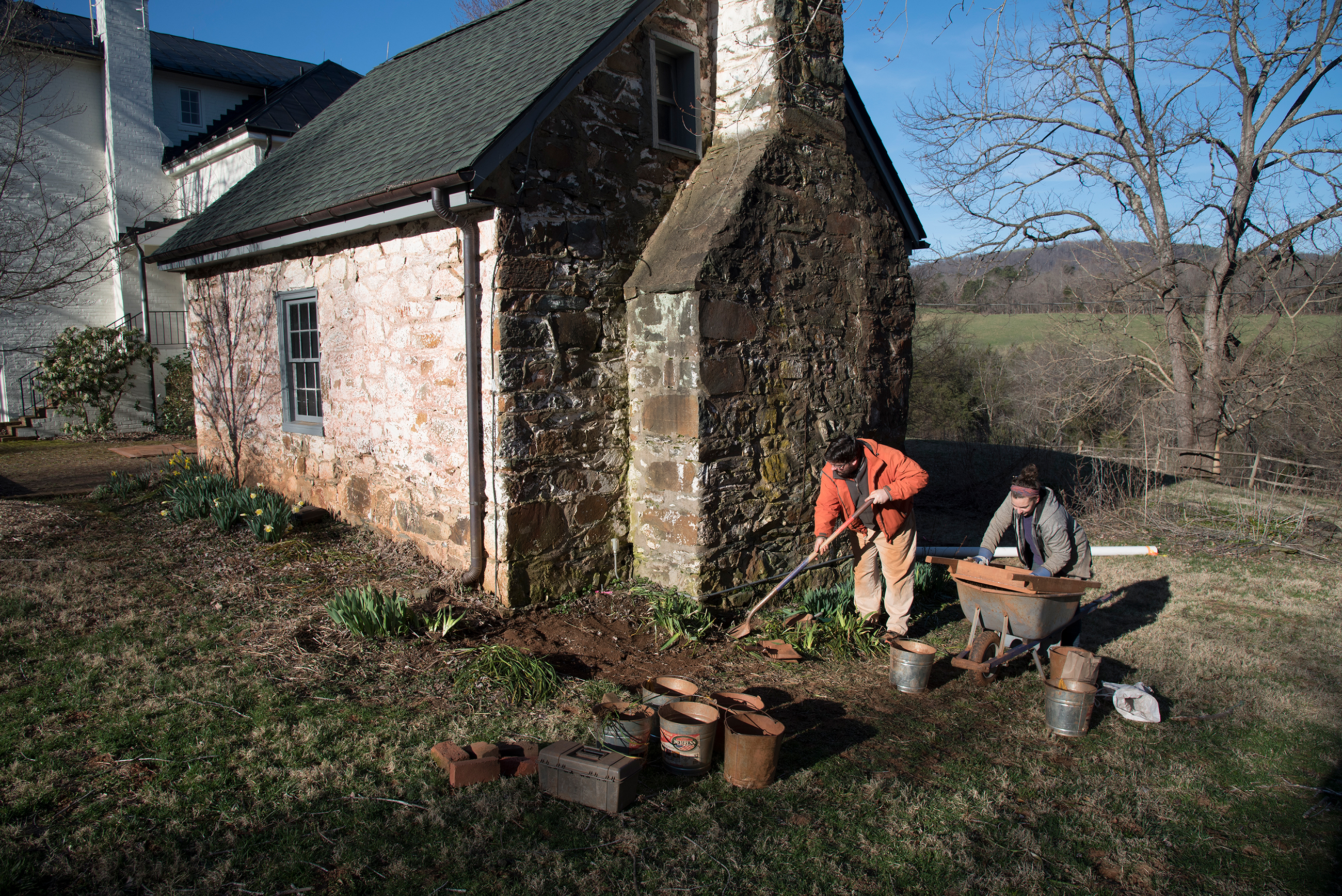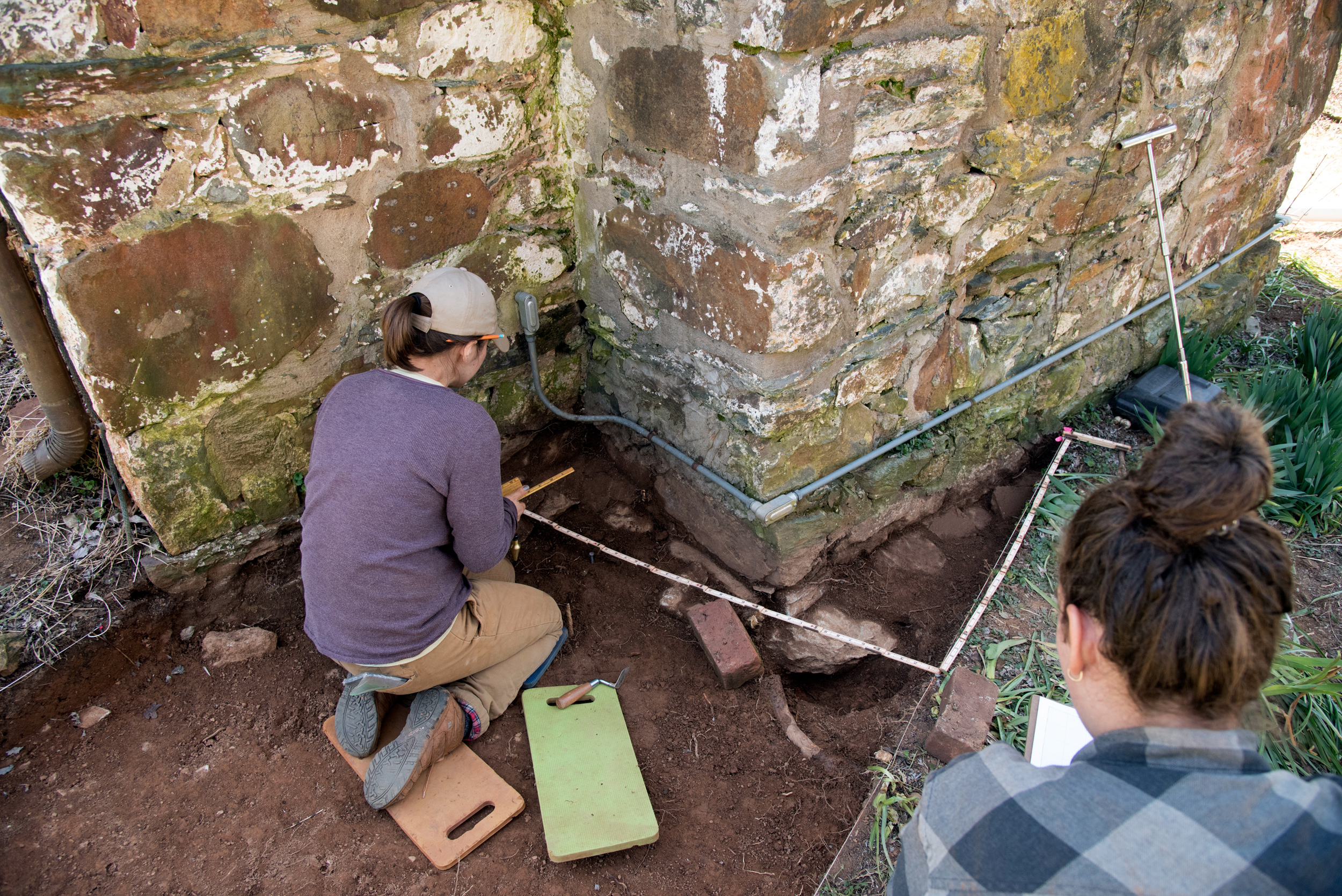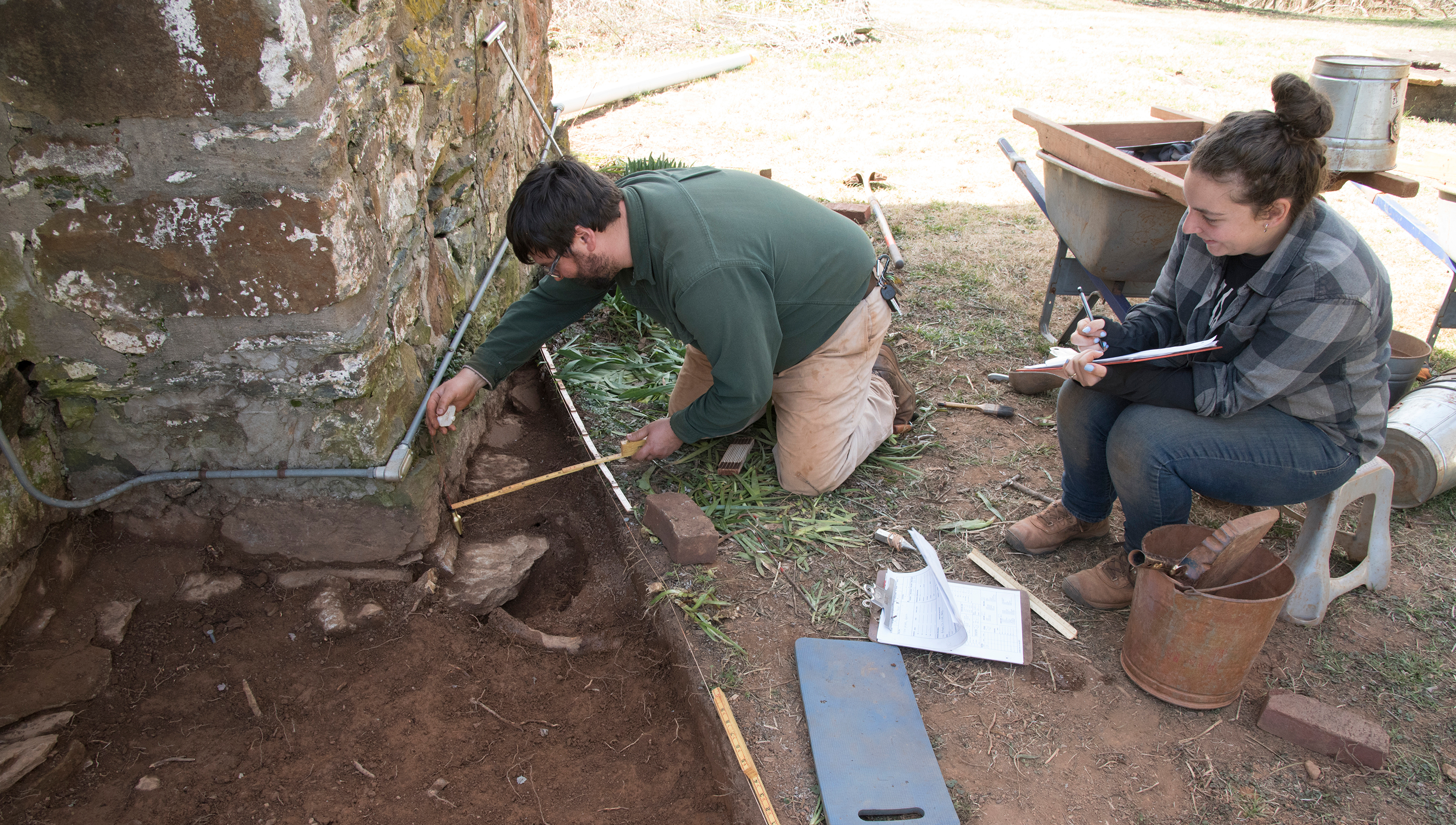Archaeological Research Begins to Tell the Story of Tufton
 Map of part of the Monticello Plantation circa 1796
Map of part of the Monticello Plantation circa 1796Last week archaeologists began test excavations at an early-19th-century stone house at Tufton, one of the four quarter farms that comprised Monticello Plantation. The stone house is an important part of the Monticello story, but how just how it fits and even when it was built remain unclear. The stone house may have been home to Jefferson’s grandson, Thomas Jefferson Randolph, during the decade that he managed the Tufton farm, starting in 1817. Our current work is part of an interdisciplinary effort to advance our understanding of the stone house and its role in the evolution of the Tufton Farm, from the mid-18th to the mid-19th centuries.
 Archaeologists Craig Kelley and Sarah Corkett start excavations around the Stone House at Tufton
Archaeologists Craig Kelley and Sarah Corkett start excavations around the Stone House at Tufton
However, our immediate concern is pragmatic: stabilizing the foundation to ensure that the stone house does not fall down. To that end, the archaeology team will be excavating three 5-foot quadrats to allow restoration specialists to assess the condition of the foundation below grade and to design an effective intervention. Along the way, the archaeologists will get a glimpse of the structure's stratigraphic record and recover artifacts that should shed light on the timing and intensity of domestic activity associated with it.
 Archaeologists Crystal Ptacek and Sarah Corkett start mapping the foundation footer of the Stone House at Tufton
Archaeologists Crystal Ptacek and Sarah Corkett start mapping the foundation footer of the Stone House at Tufton
The documentary record attests that Tufton's archaeological research potential extends far beyond the stone house. In the 1750's, Peter Jefferson patented the core of what today is a 500 acre tract and established on it a quarter farm staffed by a small group of enslaved laborers who began clearing the forest to grow tobacco. He called it "the lower quarter". Thomas Jefferson inherited the tract and continued to operate it as a quarter farm. In the 1790s Jefferson made wheat the focus of production at Tufton as well as at the Monticello home farm. During his presidency, Jefferson leased Tufton to planter John Craven who, according to contemporary accounts, made Tufton a commercial success by again growing tobacco. By 1818 Jefferson's grandson Thomas Jefferson Randolph was managing the property. In 1833 Thomas Macon purchased Tufton. Just before his death in 1851, he built the brick mansion that still stands adjacent to the stone house. Macon's probate inventory suggests wheat was once again the primary crop.
 Archaeologists Craig Kelley and Sarah Corkett continue to measure and map the foundation footer of the Stone House
Archaeologists Craig Kelley and Sarah Corkett continue to measure and map the foundation footer of the Stone House
Tufton's buried archaeological record has exciting potential to shed new light on the ecological and social dynamics linked to initial settlement, tobacco monoculture, and the transition to a more diversified agricultural regime based around wheat. Because it was managed in the early 19th century by Craven and then by Thomas Jefferson Randolph, Tufton offers a useful contrast to identify the unique strategies that Thomas Jefferson employed on the Monticello home farm which he managed during the same period. It also of the opportunity to explore how agricultural ecology and the lives of enslaved people changed under Macon ownership up to the Civil War. Stay tuned!


